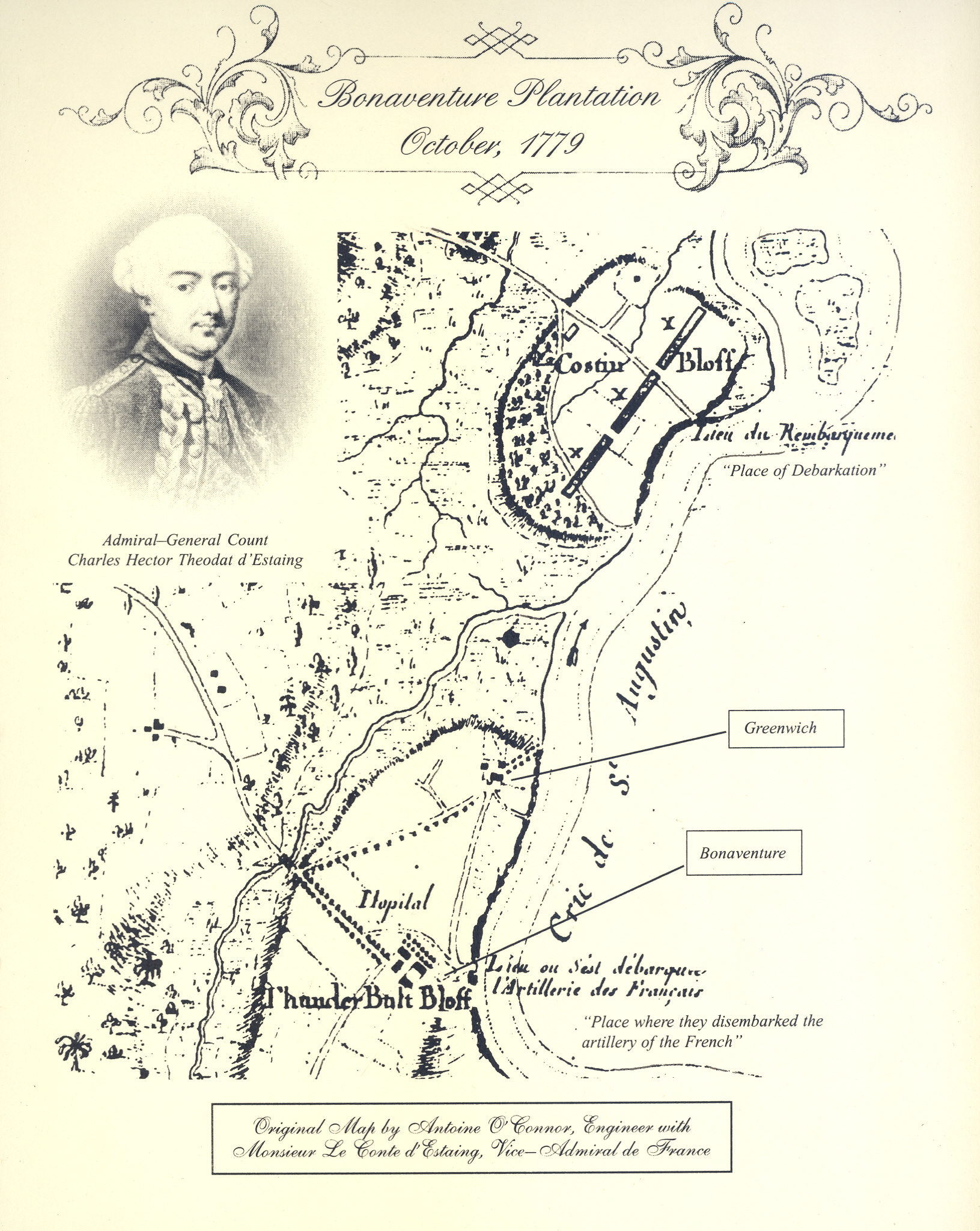Welcome to the Bonaventure Chapter, NSDAR
On April 18, 1925, Bonaventure Chapter, National Society Daughters of the American Revolution, was organized with Mrs. F. B. Elmore, Sr., as Organizing Regent. Sixteen of the charter members were direct descendants of the Salzburgers. In 1926 Bonaventure Chapter presented gavels made from old cedars on Whitmarsh Island to the state and national DAR societies. The state society's gavel contained three handmade nails from the Jerusalem Church built at Ebenezer in 1767.
Bonaventure Society was named in honor of Bonaventure Plantation which had been the birthplace, home and final resting place of Josiah Tattnall, Jr., who served under General Nathaniel Green during the American Revolution and later became governor of Georgia. Following the October 9,1779 Siege of Savannah, the plantation had been used as a hospital for Count Charles Henri d'Estaing's wounded French soldiers and others including Count Casimir Pulaski. The 160-acre Bonaventure Cemetery, located on the site of Bonaventure Plantation, is the final resting place for many who played an important role in the history of Georgia and the United States, including two of Georgia's "Sons of Liberty," Nobel Wymberly Jones and Edward Telfair.
Through the years Bonaventure Chapter has placed markers to designate various historic locations, including Savannah Theater (the oldest in active use in the United States, build by John Jay in 1818), the bank building at 22 Bull Street (site of the Public Store of the English colonists, 1734), buildings at 22 – 24 Congress Street (site of the Public Oven and the House for Strangers in 1734), the intersection of Washington Highway and the Old Ebenezer Road in Effingham County to mark the Salzburger Trail. Most recently a historical marker was placed in Emmett Square in Savannah (2005) to honor the efforts in the American Revolution of Jane Cuyler whose revolutionary activities included hosting meetings of Savannah's Liberty Boys in her home.

